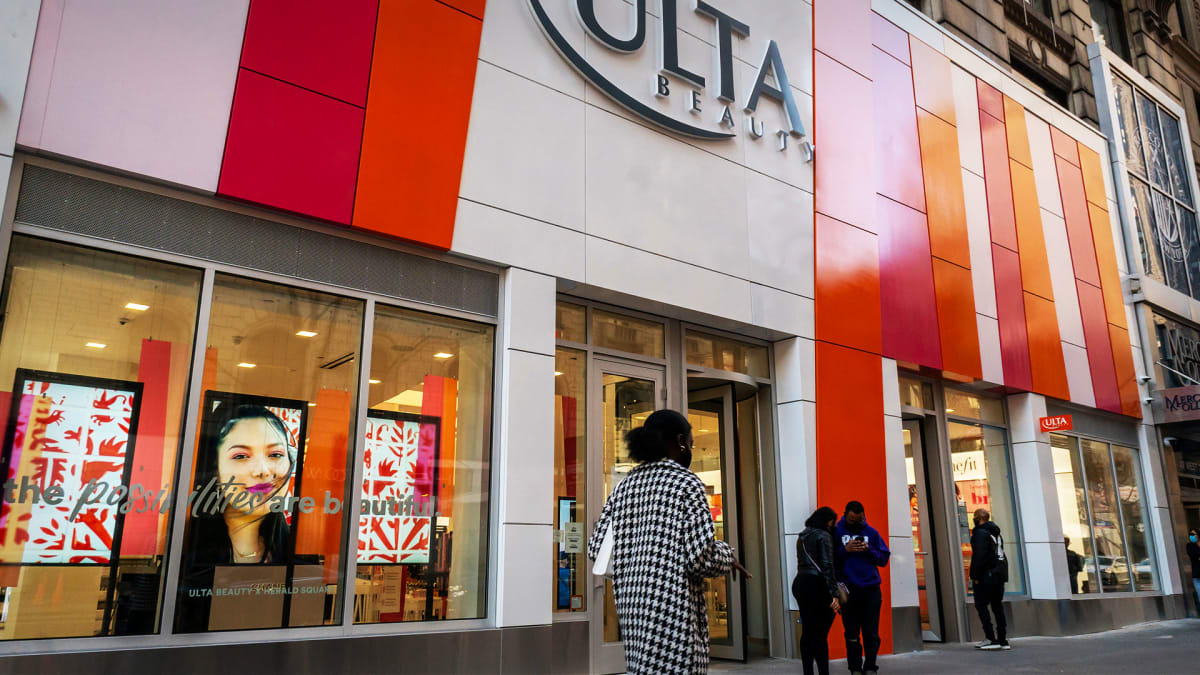
Black Friday may no longer attract the kind of elbowing, shoving lines of a decade ago but that doesn't mean that malls are sitting empty. The beauty retailers were the ones who, this year, attracted the most in-person shoppers.
Mall visits were, according to foot traffic data put together by location analytics company Placer.ai, 261% higher on Black Friday than on an average day in the first three quarters of 2022.
That number was at 277% for indoor malls, 395% for outlet malls and 159.6% for open-air lifestyle centers.
Pounding Pavement For That Ulta Makeup
The one store that came out as a clear winner was cosmetics retailer Ulta (ULTA). Beauty and spa retailers saw their foot traffic increase by 14.6% compared to 2021 while the Illinois-based Ulta saw a visit increase of 16.5% year-over-year and 31% from 2019.
"The data serves as the latest indication of the ongoing decline of Black Friday’s centrality," Ethan Chernofsky, VP of Marketing at Placer.ai, said in a statement. "Nonetheless, the day did still drive a massive surge in visits with some retailers seeing increases of 300% or more on the average daily visits in November in the weeks leading up to Thanksgiving."
One reason for such numbers could be that Ulta's website crashed immediately after it started rolling out its Black Friday sales. The retailer sells a variety of different beauty, hair and lifestyle products and is extremely popular among young consumers.
Almost every other big retailer analyzed by Placer.ai, including Marshalls department store and Nordstrom Rack (JWN), saw foot traffic drop compared to 2021. Discount department store TJ Maxx saw foot traffic stay flat with no change.
Best Buy (BBY), out of which some of the worst Black Friday crowd photos would emerge circa 2012 and 2013, saw a 3.6% drop in traffic. Due to the higher costs of their products, Apple (AAPL) stores are also usually popular among deal-hunters but saw a drop of 11% in foot traffic this year.
As the sales period gets spread out over a longer period of time, some stores have chosen to move away from promoting Black Friday and toward a more general "holiday sales" marketing, although the Placer.ai data does not dive into the causality and whether one leads to stronger traffic on a given day.
"While Black Friday may not possess the draw it had in years past, it still retains a unique ability to drive urgency among consumers," Chernofsky said.
Should We All Just Invest In Ulta Now?
Ulta has been on a strong streak for many months now. Sales were up a respective 20% and 16% in the first two quarters of the year and the retailer has used that profitability to invest significant funds into various redesigns, expansions and partnerships with big-box chains.
At $456.14, shares are also up 13.64% from a year ago at last check. While some analysts are uncertain whether this Ulta's streak of success is a slightly longer flash in the pan, it is a stock that has been getting a lot of attention for the retailer's strong sales and a covid emergence in the face of new pressures like inflation.
"Price gaps and strong rallies are hard to navigate because it makes deciding on a stop loss order hard," Bruce Kamich wrote for TheStreet's RealMoney back in May. "Strong moves can be partially retraced, but the fear of missing out can push us to make purchases that could prove risky."







